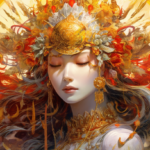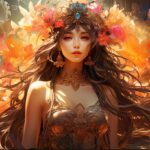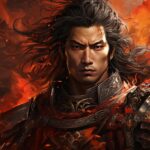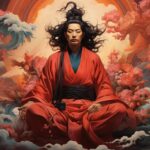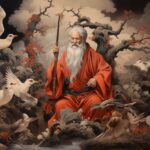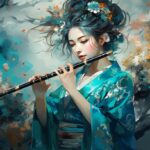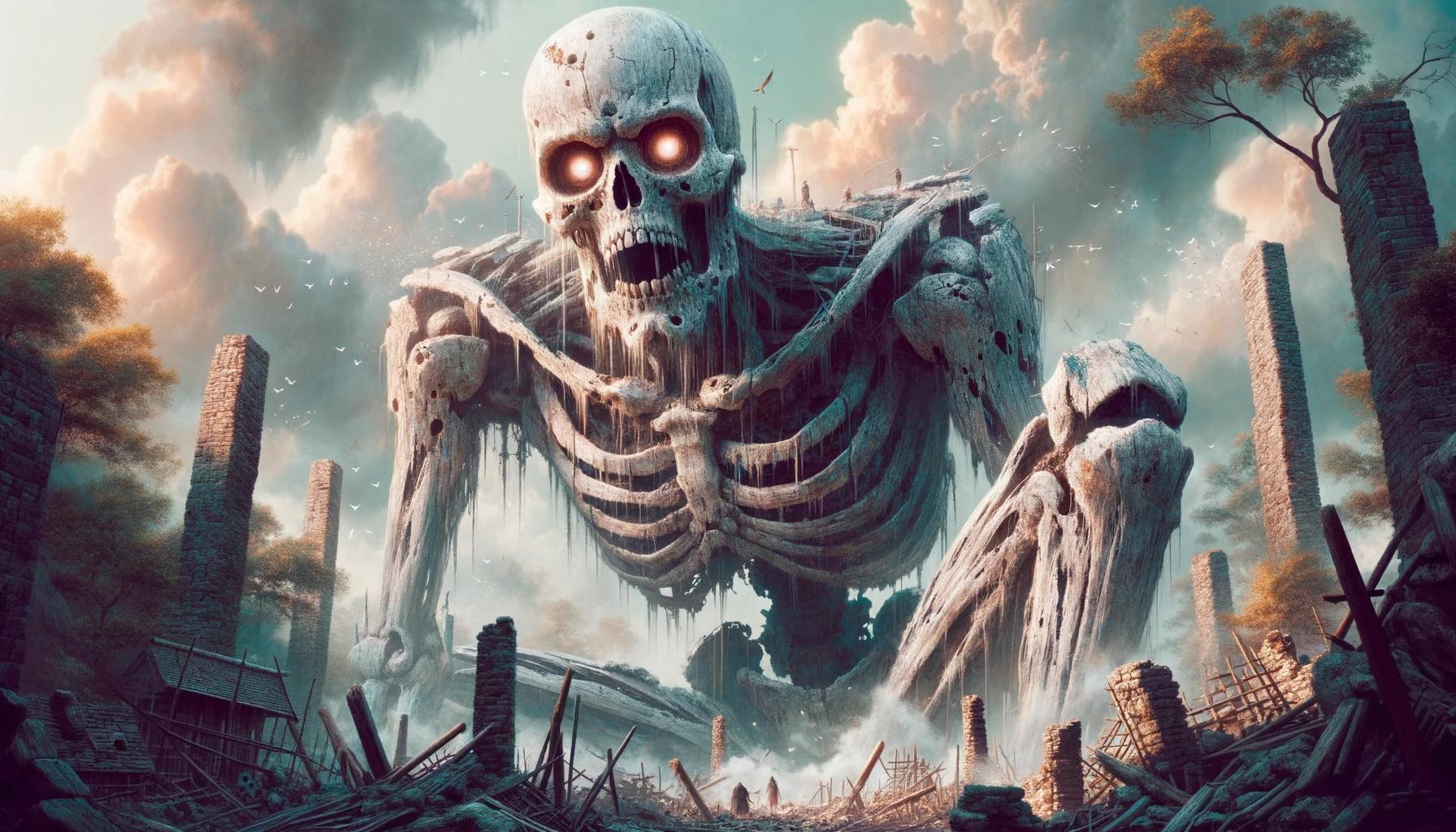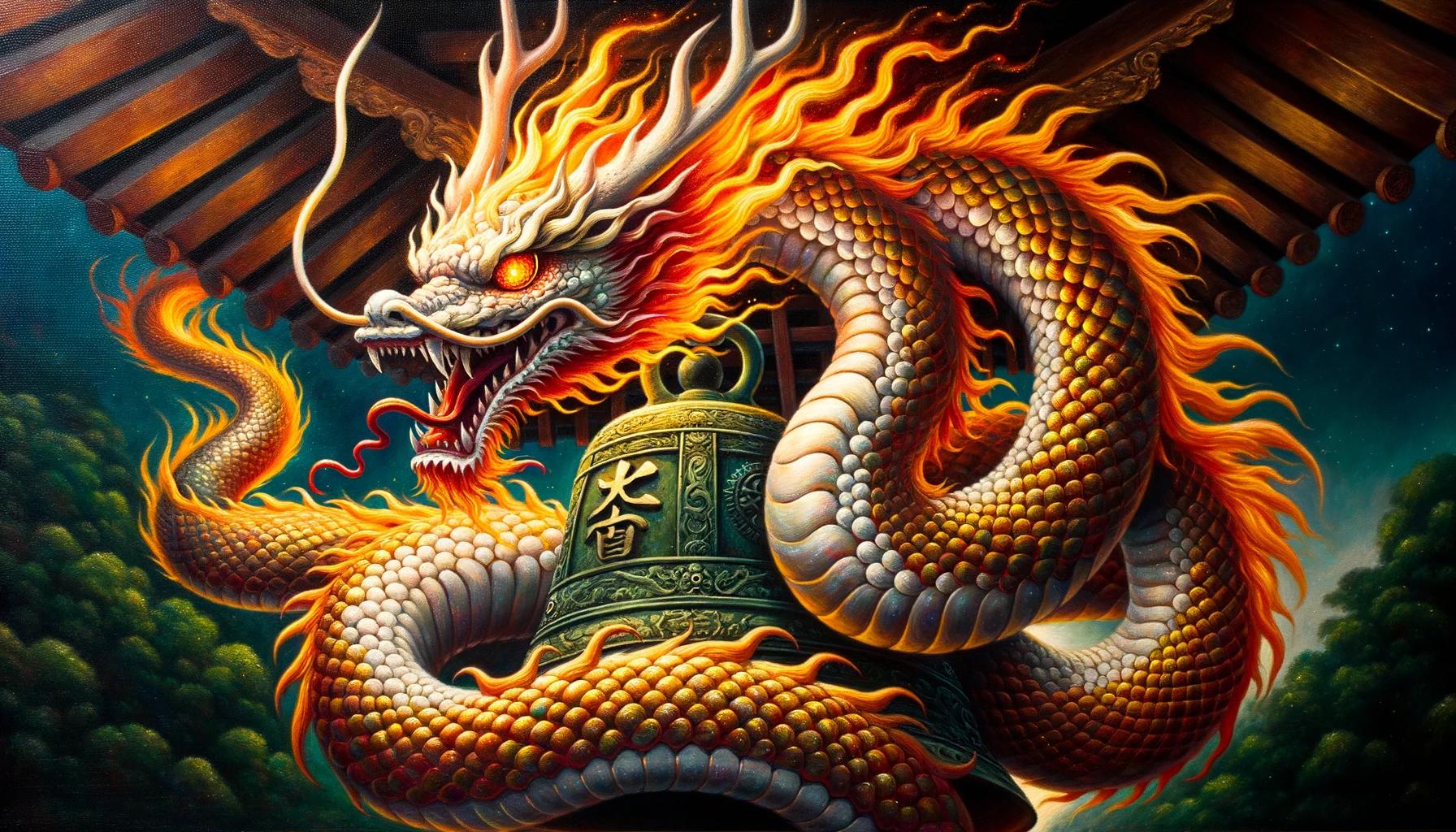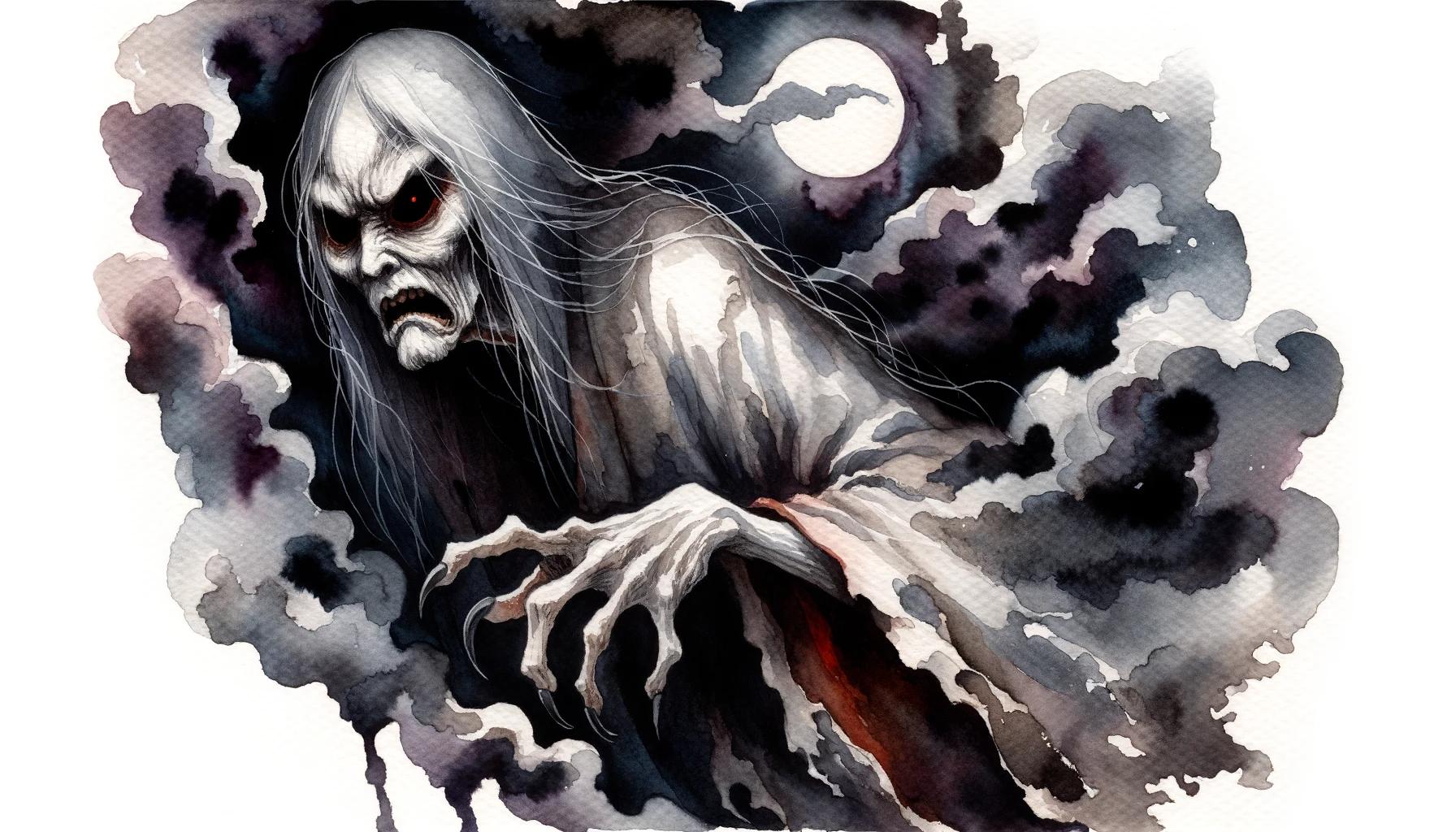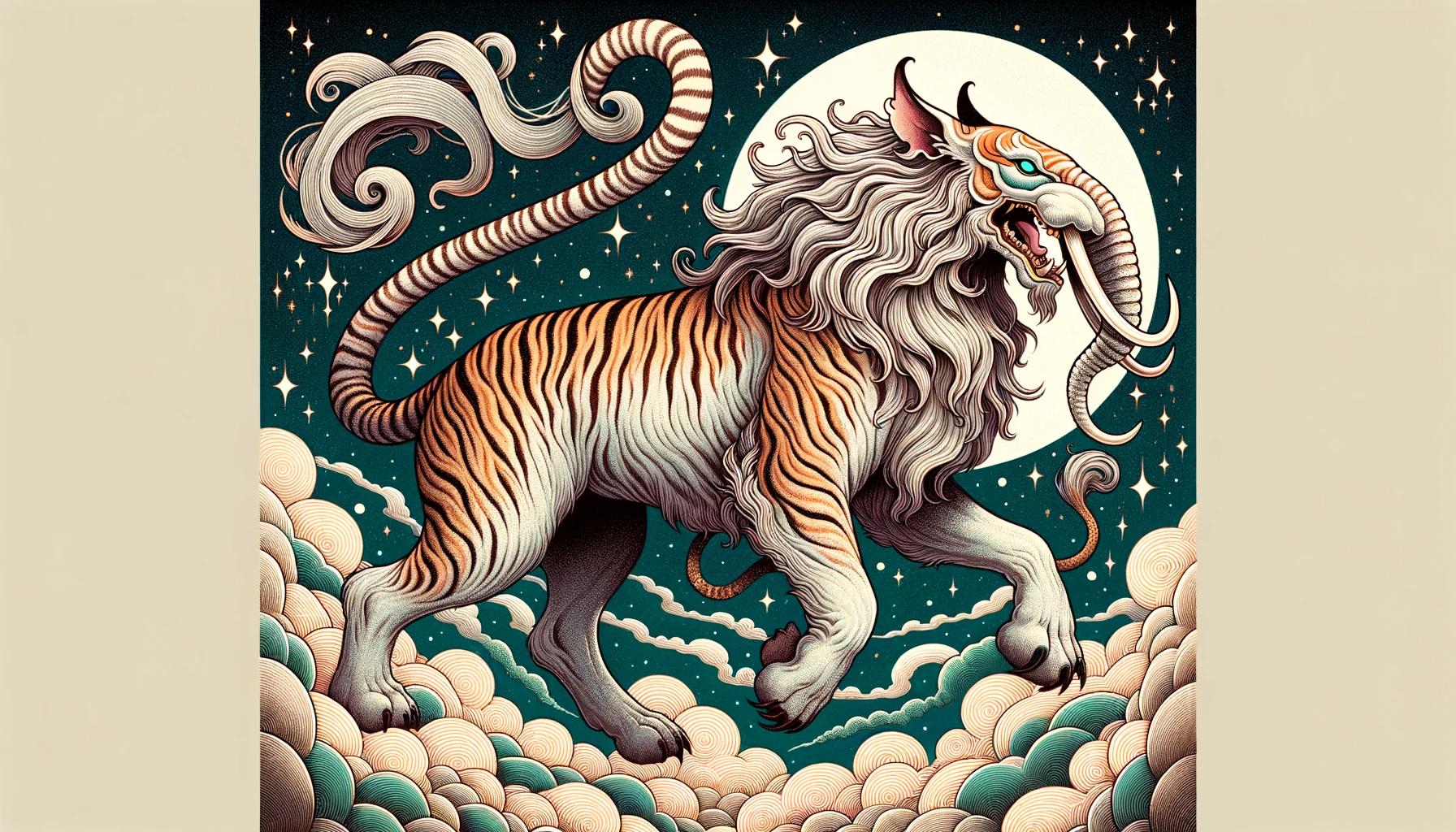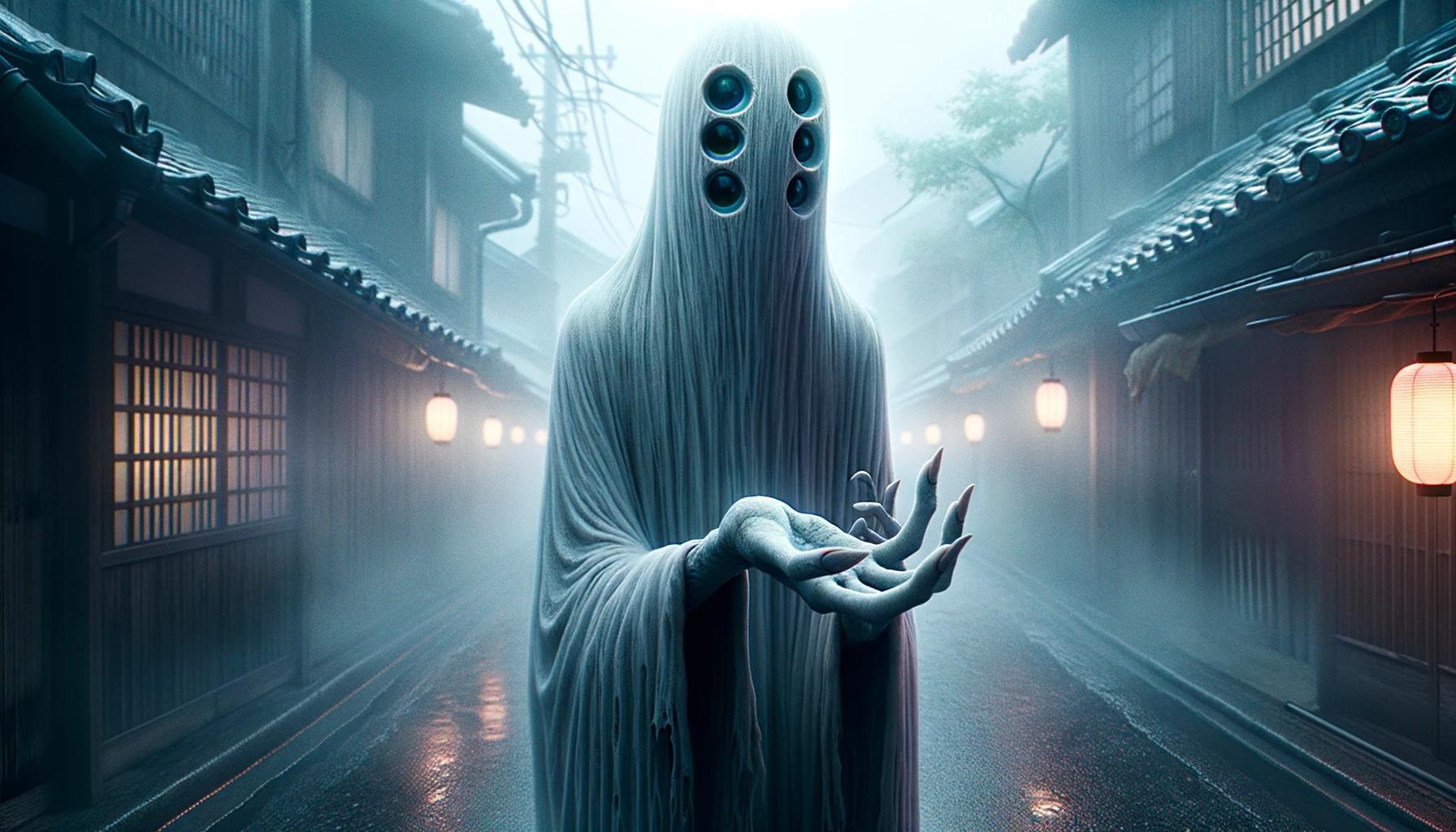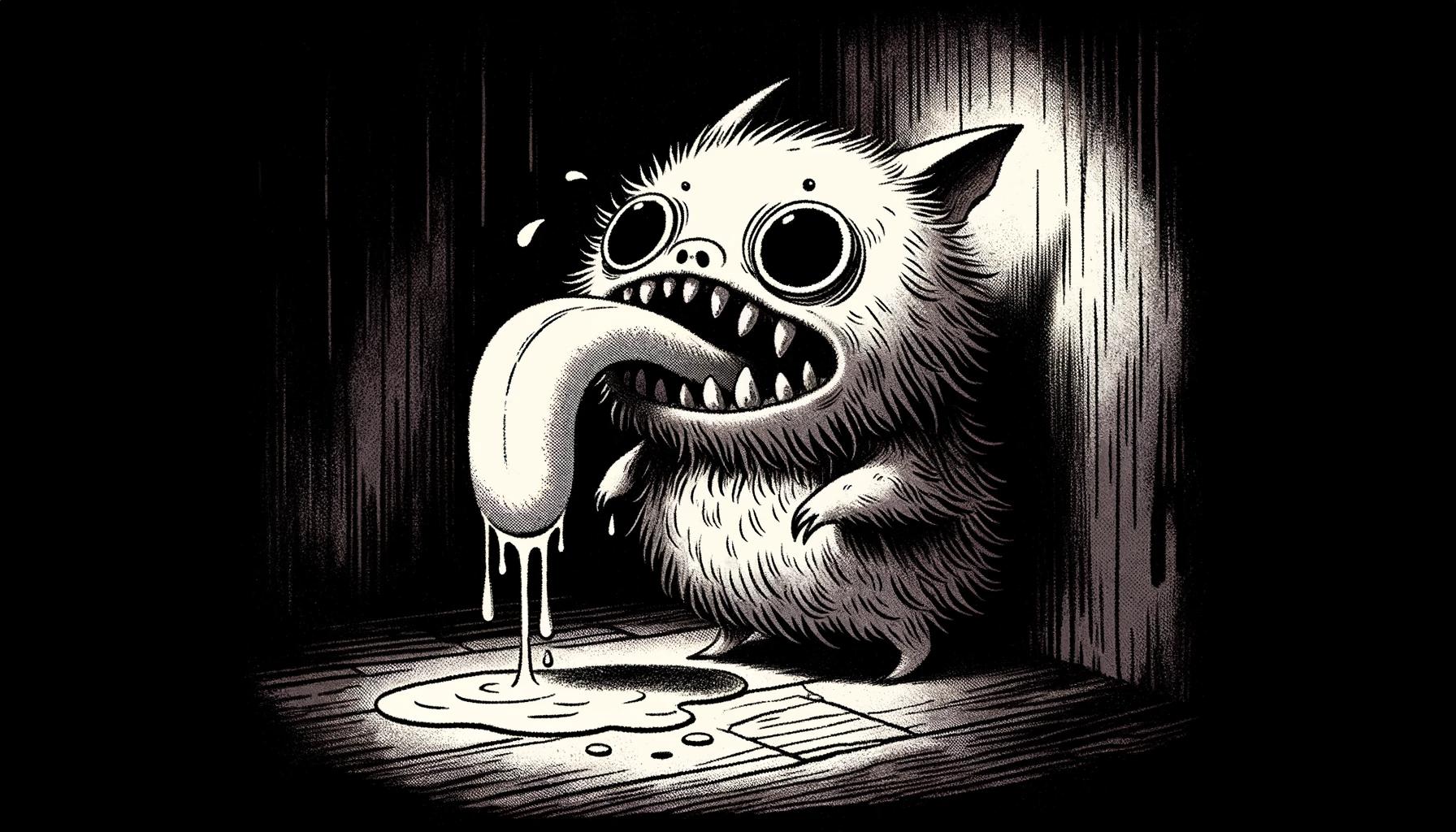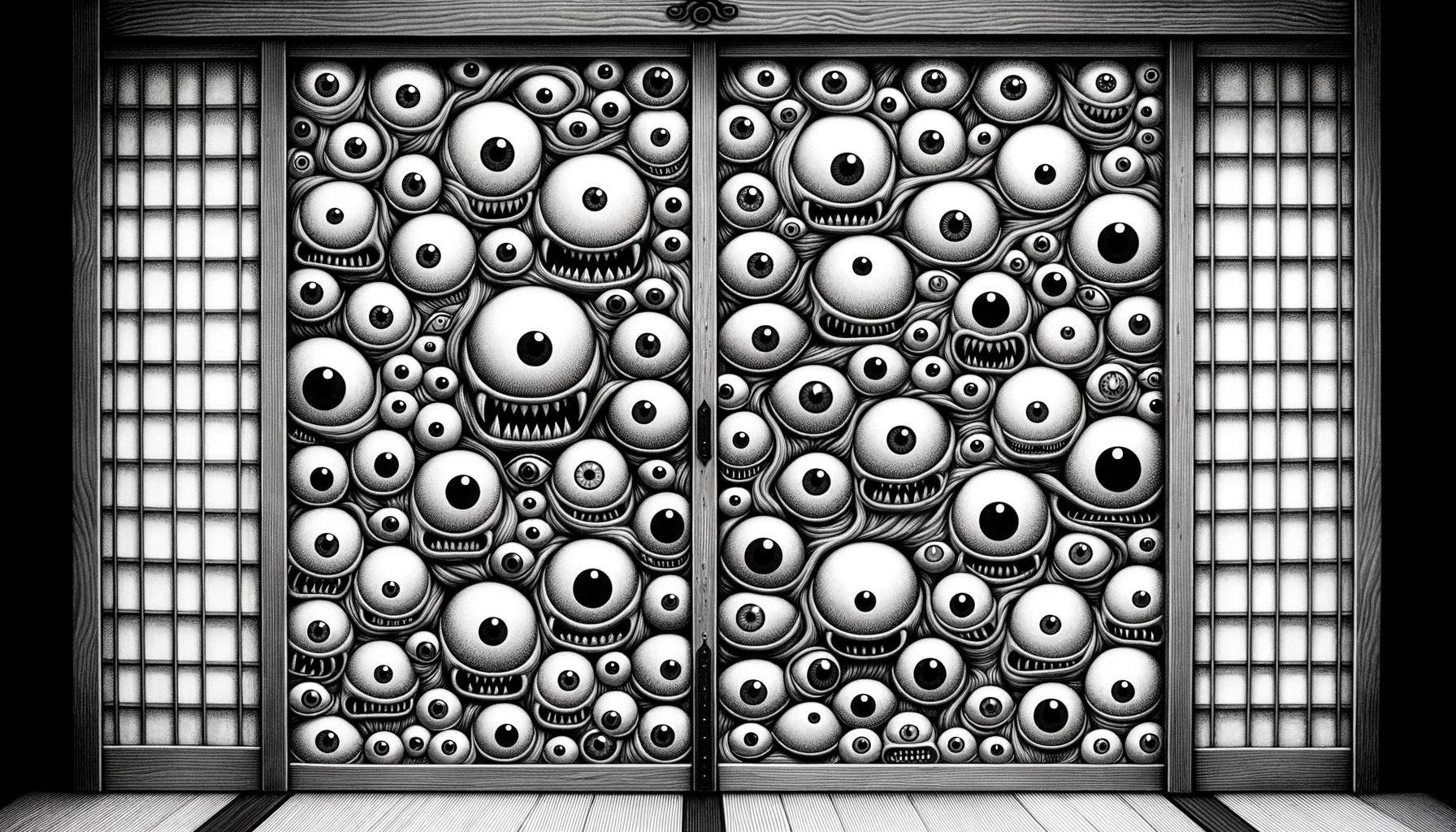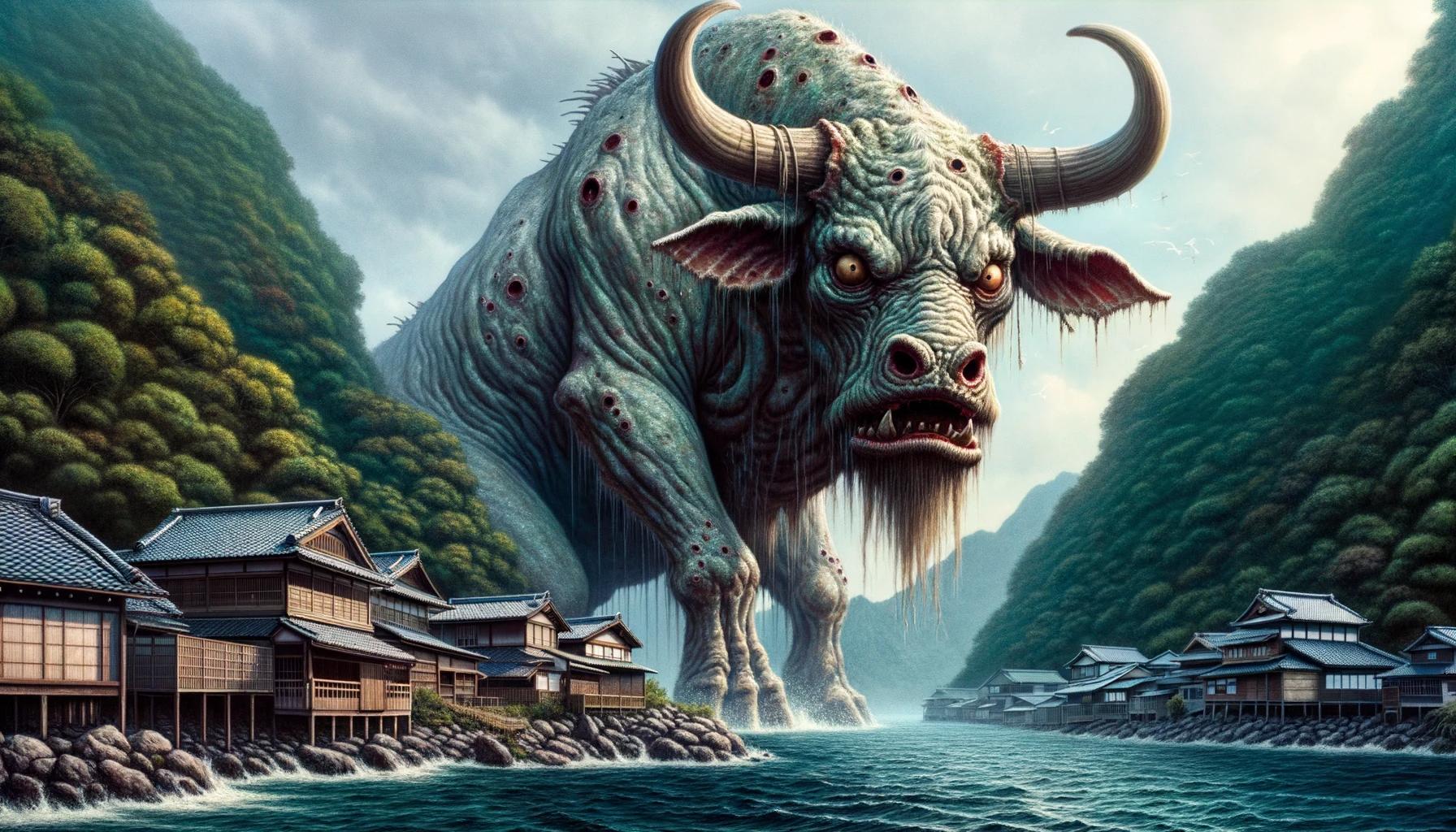Gashadokuro Yokai: Exploring the Terrifying Giant Skeleton Spirits of Japan
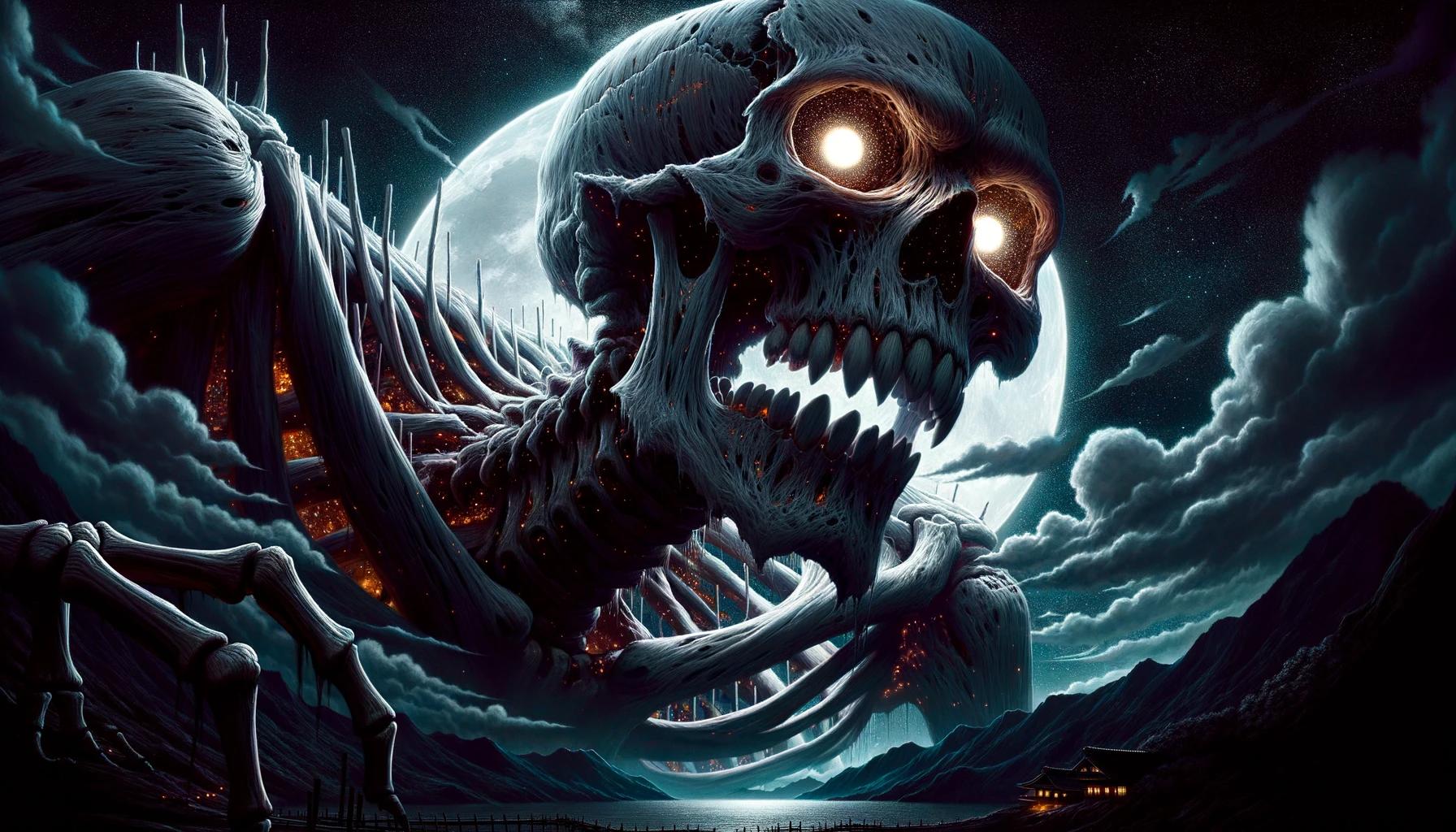
Gashadokuro yokai, the terrifying giant skeleton spirits of Japanese folklore, are creatures steeped in mystery and legend. These supernatural beings, formed from the remains of fallen soldiers and famine victims, roam the darkness of the night, seeking revenge and blood.
With their enormous skeletal forms and stealthy approach, they pose a formidable threat to late-night travelers. Despite their dwindling presence in modern times, Gashadokuro continue to captivate through their representation in art, literature, movies, anime, and video games.
This article explores their origins, characteristics, cultural significance, and the rituals associated with dealing with these fearsome yokai.
Japanese Yokai Folklore: Exploring the Mysterious World of Gashadokuro Yokai
Japanese folklore is filled with captivating tales of supernatural creatures known as yokai. These mystical beings, deeply rooted in Japanese mythology, have intrigued and frightened people for centuries. One particular yokai that stands out is the Gashadokuro, a giant skeleton spirit that roams the night with an insatiable thirst for blood and revenge.
Yokai: Supernatural Creatures in Japanese Mythology
In Japanese mythology, yokai are supernatural creatures that embody various forms of phenomena or spirits. They can be mischievous, malicious, or even benevolent. Yokai come in a wide range of shapes, sizes, and characteristics, representing different aspects of nature, emotions, or human experiences.
Origins and Legends of Gashadokuro Yokai
The legend of the Gashadokuro finds its roots in ancient Japanese folklore. Stories have been passed down for generations, recounting the mysterious formation and terrifying nature of these giant skeletal creatures.
According to legend, Gashadokuro are formed from the remains of fallen soldiers who died in battle or victims of famine who were denied proper funerary rituals.
The Formation of Gashadokuro from Fallen Soldiers and Starved Victims
When the bodies of fallen soldiers or starved victims are left unburied or abandoned in the fields, their souls become trapped, unable to pass on to the afterlife.
Fueled by anger and pain, their lingering spirits combine and transform into colossal skeletal monsters known as Gashadokuro. Hundreds of bones merge together to form a single entity, driven by an insatiable hunger for vengeance.
- The souls of unresolved deaths.
- Anger and pain giving rise to supernatural energy.
- The fusion of hundreds of bones into a single monstrous entity.
The Gashadokuro’s immense size and power make them seemingly invincible.
They persist until the malevolent energy within them is completely exhausted. However, the scarcity of wars and famines in modern times has led to a decline in encounters with these terrifying yokai.
Characteristics and Behavior of Gashadokuro Yokai
Gashadokuro yokai possess distinctive characteristics and exhibit terrifying behavior that strikes fear into the hearts of those who encounter them.
The Gigantic and Skeletal Appearance of Gashadokuro
Gashadokuro are known for their immense size and skeletal form, towering over humans with their bony frames. These yokai take the shape of colossal skeletons, their elongated limbs covered in decaying flesh or fragments of armor.
Their presence is truly awe-inspiring and evokes a sense of overwhelming dread.
Stealthy Approach and Terrifying Attacks
Despite their massive stature, Gashadokuro possess an eerie ability to move silently, allowing them to sneak up on their unsuspecting prey. With each step, they emit a bone-chilling sound known as ‘gachi gachi.’
Their stealthy nature only amplifies the fear and vulnerability experienced by their human victims who encounter them in the darkest hours of the night.
Once they close in on their target, Gashadokuro unleash their terrifying attacks.
They crush their victims with their enormous hands or deliver bone-crushing bites to the head. The sheer force of their onslaught leaves no room for escape, as their immense strength overpowers all who stand in their way.
Unquenchable Thirst for Blood and Revenge
Bloodlust and vengeance drive the actions of Gashadokuro. These yokai harbor an insatiable thirst for human blood, targeting solitary travelers who venture out late at night as their preferred victims. The decapitation of their prey allows them to consume the life-sustaining essence, satisfying their dark desires.
Furthermore, Gashadokuro seek retribution for their own unjust deaths. Formed from the remains of soldiers and famine victims who never received proper funeral rites, these spirits perpetually yearn for what they lost in life.
Their malevolence and rage manifest in their relentless pursuit of bloodshed, seeking to avenge their own untimely demises.
As the night falls and the Gashadokuro roam the fields, their haunting presence can be detected by a distinct buzzing sensation in the ears.
This serves as a warning, allowing potential victims to recognize the imminent danger and take precautions to avoid encountering these monstrous specters.
Cultural Significance and Representation of Gashadokuro Yokai
The Gashadokuro yokai holds a significant place in Japanese art, literature, and popular culture. Its eerie and imposing image has long captured the imagination of artists and storytellers, leading to its depiction in various creative mediums.
Gashadokuro in Japanese Art and Literature
In traditional Japanese art and literature, the Gashadokuro is often portrayed as a fearsome and formidable creature. It appears in woodblock prints, paintings, and written works, showcasing its skeletal form and immense size.
Artists have skillfully captured the details of its haunting presence, emphasizing its connection to death and the supernatural realm.
Many legends and tales have been written, incorporating Gashadokuro as a central element.
These stories showcase its relentless pursuit of vengeance and the terror it inflicts upon unsuspecting victims. Whether in poetry or prose, Gashadokuro serves as a symbol of the unforgiving consequences that await those who disrespect the natural order.
Gashadokuro in Popular Culture: Movies, Anime, and Video Games
Gashadokuro’s influence extends beyond traditional art and literature, making its mark in popular culture as well. It has become a recurring theme in Japanese movies, anime, and video games, captivating audiences with its menacing presence.
Animated films like ‘Pompoko’ and popular anime series such as ‘One Piece’ and ‘Inu x Boku SS’ have featured Gashadokuro, introducing it to a new generation of fans. Its appearance in these mediums often brings forth a sense of fear and danger, amplifying the suspense and thrill for viewers and players alike.
Video games like ‘The Legend of Zelda: Majora’s Mask’ and ‘Dark Souls 3′ incorporate Gashadokuro as formidable adversaries, testing the players’ skills and determination to overcome seemingly insurmountable challenges. The creature’s lore and abilities add depth to the game worlds, immersing players in its eerie mythology.
Symbolism and Meaning Behind the Gashadokuro Yokai Legend
The legend of Gashadokuro carries symbolic significance within Japanese culture. It represents the consequences of unresolved anger, the longing for justice, and the cycle of vengeance. The Gashadokuro serves as a cautionary tale, reminding individuals of the importance of honoring the departed and respecting the natural order of life and death.
Furthermore, Gashadokuro reflects the darker aspects of human emotions and the consequences of war and famine. Its presence serves as a reminder of the horrors and sufferings that occur during times of conflict and scarcity.
Through its symbolism, Gashadokuro encourages contemplation on the fragility of peace and the importance of maintaining harmony and respect within society.
Rare Sightings and Decline in Gashadokuro Encounters
In recent times, sightings of Gashadokuro yokai have become increasingly rare. This can be attributed to the scarcity of wars and famines, which were prevalent in the past and contributed to the formation of these colossal spirits.
The decline in Gashadokuro encounters can be better understood by examining two key factors: the impact of reduced warfare and famine, and the modern interpretation and awareness of Gashadokuro yokai.
Scarcity of Wars and Famines: Impact on Gashadokuro’s Presence
In the past, battlefields and areas struck by famines provided ample opportunity for Gashadokuro yokai to form and emerge.
The accumulation of the bones of fallen soldiers and victims of starvation created the conditions for these vengeful spirits to manifest. However, as warfare and famine became less prevalent over time, the availability of potential Gashadokuro bodies diminished.
The decrease in wars can be attributed to the relative stability and peace that Japan has experienced in recent decades. With fewer battlefields and fewer casualties, there are fewer opportunities for soldiers’ remains to contribute to the formation of Gashadokuro.
Similarly, advancements in agriculture and societal developments have greatly reduced the occurrence of widespread famines, further limiting the number of victims for these spirits to draw upon.
Modern Interpretation and Awareness of Gashadokuro Yokai
While Gashadokuro yokai sightings have declined, their presence remains ingrained in Japanese folklore and popular culture.
The legend of the Gashadokuro continues to captivate the imaginations of people, but it is often viewed through a historical and mythical lens rather than as a current threat.
Modern interpretations of Gashadokuro yokai focus on their symbolism and significance rather than their physical manifestations.
Artists, writers, and filmmakers continue to incorporate these skeletal giants into their works, telling stories that explore themes of justice, vengeance, and the consequences of war and famine. This widespread awareness and appreciation for the Gashadokuro legend ensure that these yokai remain a notable part of Japanese cultural heritage.
In conclusion, the scarcity of wars and famines, along with the modern interpretation and awareness of Gashadokuro yokai, have led to a decline in sightings of these colossal spirits. While they may be encountered less frequently in the present day, the legend and significance of Gashadokuro continue to captivate and inspire artistic expressions in Japanese culture.
Dealing with Gashadokuro Yokai: Folklore and Rituals
Protective Measures against Gashadokuro Attacks
In order to defend against the terrifying attacks of the Gashadokuro yokai, various protective measures have been passed down through generations in Japanese folklore. These measures are believed to ward off the malevolent spirits and keep travelers safe from harm.
- Carry a small charm or amulet blessed by a Shinto priest, believed to offer protection against the Gashadokuro’s wrath.
- Travel in groups, as the Gashadokuro is less likely to attack a larger number of people.
- Avoid venturing out alone during the darkest hours of the night when the Gashadokuro is said to be most active.
- Offer prayers and make offerings at Shinto shrines for spiritual protection and guidance.
Role of Shinto Priests in Confronting Gashadokuro
In Japanese folklore, Shinto priests play a vital role in confronting and dealing with the Gashadokuro yokai.
These priests possess knowledge and skills to perform rituals and ceremonies to banish or pacify the malevolent spirits. They act as intermediaries between the human world and the supernatural realm, harnessing their spiritual powers to protect communities from the wrath of the Gashadokuro.
Tales and Strategies from Folklore to Escape Gashadokuro’s Wrath
Throughout history, numerous tales and strategies have emerged from Japanese folklore, offering guidance on how to escape the wrath of the Gashadokuro. These stories serve as cautionary tales and provide insights into ways to avoid encountering these terrifying spirits.
Some strategies include:
- Listening for the distinct ‘gachi gachi’ sound, which is said to warn of the Gashadokuro’s presence nearby.
- Seeking refuge in well-lit areas or near Shinto shrines, as the Gashadokuro is believed to avoid places imbued with spiritual energy.
- Carrying salt or other purifying substances, which are thought to have the power to repel evil spirits.
- Learning and reciting protective chants or prayers to ward off the Gashadokuro’s malevolence.
These tales and strategies serve as reminders of the importance of respecting the spiritual realm and remaining vigilant while traversing the dark corners of the night, keeping both body and soul safe from the vengeful grasp of the Gashadokuro yokai.
.

